Jeremy Miller's Blog, page 22
April 17, 2018
Close The Briefcase: The Most Powerful Sales Tactic

Your customers are looking for a good product at a fair price, but some customers just ask for too much. They demand deep discounts and excessive payment terms, and they push and push.
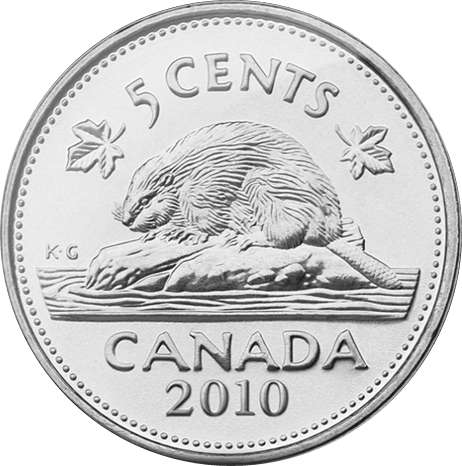 A procurement manager once joked to me, “We squeeze a nickel until the beaver poops!”
A procurement manager once joked to me, “We squeeze a nickel until the beaver poops!”
This is a Canadian colloquialism, because the Canadian 5¢ coin has a beaver on it. The procurement manager was pointing out their unstated policy: squeeze vendors for every nickel.
Selling on price sucks. Use this sales tactic when you or your sales reps feel excessive pressure, “Close the Briefcase.”
A Powerful Sales Tactic
Early in my career I brought my sales manager along to help me close a big deal. I’d been negotiating with a prospective customer for several weeks, and I needed his help bring this “whale” home.
It was a difficult meeting. The customer clearly wanted our product, but he kept throwing up roadblocks and demands that our CFO wouldn’t accept.
After 40 minutes of going nowhere my sales manager shocked me. He closed his notebook and said, “Gentlemen, I appreciate the time you have invested with us, but it appears we can’t do business with you. You’re not a fit for us.” He stood up and headed for the door. He gave me a quick look and said, “Let’s go Jeremy.”
I was in shock. I’m pretty sure every bit of color drained from my face. This was a big deal. It had the potential to make my year, and my manager just killed it!
In a daze I stood up and headed for the door.
Before we even made it past reception the President of the firm called us back. He came rushing out, and asked for five more minutes. The next five minutes were a breeze. The customer accepted the terms, and the deal was done.
Close the Briefcase
My manager explained afterwards that he used the “Close the Briefcase” sales technique. The name comes from a time when salesmen carried a briefcase. Closing ones briefcase was a sign the meeting was over.
 He said, “Not all deals are good deals. Be proud of what you sell, and never let anyone beat you up on price or denigrate our brand. You have to have the courage to walk away if a customer doesn’t fit.”
He said, “Not all deals are good deals. Be proud of what you sell, and never let anyone beat you up on price or denigrate our brand. You have to have the courage to walk away if a customer doesn’t fit.”
My manager then smiled wryly and said, “But no customer ever likes to be told they can’t buy.”
Walking away shifts the balance of power. Essentially you’re saying, “Take it or leave it.”
It takes intestinal fortitude to walk away from a prospect, and sometimes it means losing a deal. But if the customer seriously wants your services they’ll come back and accept your terms.
If you’re willing to be strong and proud of your brand, you can walk away from a bad customer. And you should.
Why It Works
I love the Close the Briefcase sales technique for three reasons:
Know Your Value. It’s really easy to get caught up in a sales process and try to win at all costs, but not all customers are good customers. Know your value, take pride in it, and sell it. If a prospect doesn’t recognize or want what you have to offer, then don’t try to convince them. Walk away.
Don’t Waste Time. Negotiating is a step in the sales process. There’s no point wasting your time trying to convince someone to buy when all they care about is getting the cheapest price.
Position of Power. No one likes to hear, “No.” The thing that surprises me most about the Close the Briefcase tactic is how many customers reverse their position after they know you’re prepared to walk from the deal. You are taking back control by saying “no,” and showing the boundaries of how far you will negotiate.
Closing the briefcase is a power move. You don’t use it often, but it’s incredibly effective when you do.
You're reading Close The Briefcase: The Most Powerful Sales Tactic by Jeremy Miller, originally posted on Sticky Branding. Did you enjoy this article? If so, sign-up for more of Jeremy's articles at Sticky Branding.
April 10, 2018
Rethinking Strategic Planning: Is Your Strategy Really a Strategy?

Managers and executives misunderstand strategy all the time.
At a CEO retreat, I asked the group to take five minutes to draw an illustration of their organization’s strategy. The challenge was to create an easy to share model or flowchart to illustrate their strategy on one page.
The group was initially taken aback by the exercise. This was a CEO peer group that met monthly, and they talked about strategy regularly. One participant said, “Five minutes? Seriously? I can have it done in 30 seconds.” I reassured the group that the exercise had a point, and set the clock.
The strategies they created divided into three predictable buckets:
Goals: Achieve a revenue, profit, or market share target. For example, grow to $25 million in sales by 2020.
Actions: Complete a task or project that is perceived important for the business. For instance, open a new office or launch a new product.
Priorities: Define areas of investment for time, resources, or capital to advance the company, such as increase brand awareness in digital channels.
Goals, Actions, and Priorities are not strategies. They may help inform the creation of a strategy, but they’re not your strategy.
Richard Rumelt writes in Good Strategy / Bad Strategy, “Strategy is about how an organization will move forward. Doing strategy is figuring out how to advance the organization’s interests.”
“How” is the critical component. You create and implement a strategy to effectively achieve a goal.
Goal setting is essential to defining a good strategy. “What do you want?” is the first question I ask when kicking off the strategic planning process, because if you don’t know what you want it’s really hard to craft a clear, concise strategy.
With a clearly defined objective you can plot the steps to get there.
 Roger Martin and A.G. Lafley provide an excellent framework in Playing To Win to define the “how.” They define a strategy through five big questions:
Roger Martin and A.G. Lafley provide an excellent framework in Playing To Win to define the “how.” They define a strategy through five big questions:
What is our winning aspiration?
Where will we play?
How will we win?
What capabilities must be in place?
What management systems are required?
Your strategy is defined by how you answer the questions. The ideal is to make your strategy simple, clear, and concise. If done well, it should fit on a page or two.
When everyone on your team clearly knows where they are going and how they’ll get there, you’ve got a strategy.
The process of developing a clear and concise strategy is deceptively hard. It often takes iterations and experimentation to clarify your thinking and prove that you’re on the right track. But the rigor is what generates your desired results.
Try the exercise for yourself. Sketch out your organization’s strategy on a blank piece of paper. Can you describe how you will move your organization from Point A to B?
You're reading Rethinking Strategic Planning: Is Your Strategy Really a Strategy? by Jeremy Miller, originally posted on Sticky Branding. Did you enjoy this article? If so, sign-up for more of Jeremy's articles at Sticky Branding.
April 3, 2018
How Brand Names Become Verbs

Category defining brands can become verbs:
You don’t just search the internet, you google it.
You ask for a Kleenex, not a tissue.
You xerox your notes, versus making photocopies.
These brands are so potent that they replaced the generic product names. But this leads me to a question. Why do some category defining brands become verbs while others do not?
Apple is the most valuable brand in the world, but we don’t use “Apple” as a verb. The same is true with Amazon, Facebook, and Disney. These companies are wildly successful household names, but we don’t use their brand names as verbs.
There’s something unique and special about brands that become verbs, and it’s in their purpose. Purpose-based brands are the most likely brand names to become verbs.
Google was designed for finding information online, and it does the job better than any other service. As Google became ubiquitous in the early 2000’s, the brand started to transition into pop-culture. For example, Buffy the Vampire Slayer was the first American TV series to use the brand as a verb in 2002. In the episode Help, Willow asked Buffy, “Have you googled her yet?”
The question made sense, especially in the early days of Google, because it was a purpose-based brand. The service did one thing really, really well: search the internet for answers.
There are dozens of : FedEx, Hoover, TiVo, Velcro, WiFi, Jacuzzi, Aspirin, and Trampoline, to name a few. What all of these products have in common is purpose. They are purpose-based brands designed to fulfill a job, and as a result customers talked about them.
This leads to the second reason why some brand names become verbs. Successful companies create successful brands, and never the other way around. The success of a brand can tip the name from a narrowly defined solution to a ubiquitous word.
Scale matters when converting brand names into verbs. You need to have a lot of people commonly using the product or service to have it enter pop-culture. This means brands must achieve a critical mass of users before there’s an opportunity to become a verb.
It’s the combination of purpose and popularity that convert brand names into verbs.
Not all brands become verbs, but the few that do create immense brand equity and a substantial barrier to entry. Can you imagine another search engine unseeding Google at this point?
You're reading by Jeremy Miller, originally posted on Sticky Branding. Did you enjoy this article? If so, sign-up for more of Jeremy's articles at Sticky Branding.
March 27, 2018
Sweet Jesus Isn’t Changing Its Name, Despite a Boycott and Backlash

P.T. Barnum once said, “There’s no such thing as bad publicity.”
I am sure there can be a case made for P.T. Barnum’s position, but I’d argue offending your customers is never a good idea — especially when you’re entering a new market.
 Toronto-based ice cream parlour, Sweet Jesus pissed off the locals as they entered the U.S. market and now face a boycott with Christians calling the branding “hate speech.” A petition against the company in CitizenGo.org states, “Choosing the name of our Lord for a brand of soft-serve ice cream is totally offensive and revolting.”
Toronto-based ice cream parlour, Sweet Jesus pissed off the locals as they entered the U.S. market and now face a boycott with Christians calling the branding “hate speech.” A petition against the company in CitizenGo.org states, “Choosing the name of our Lord for a brand of soft-serve ice cream is totally offensive and revolting.”
Despite the controversy, the company is keeping the name. Andrew Richmond, CEO of Monarch and Misfits — the restaurant group that owns Sweet Jesus — said in a statement to the CBC, “After a lot of thought, we have decided that we will not make a change.”
He continues, “We are conscious of the fact that, to some, our name can be off-putting … That fact is something we struggle with, because we sincerely do not wish to give offence or show disrespect in any way toward anyone’s personal beliefs.”
I applaud Andrew and his team for their grit, but I don’t think they’ve overcome this challenge yet. The brand will offend more Americans than it will please. My advice is to change the company name. Here’s why.
Your Name Works Here, but Not There
Canada and the United States are close neighbors and we have a lot in common, but we’re also very different.
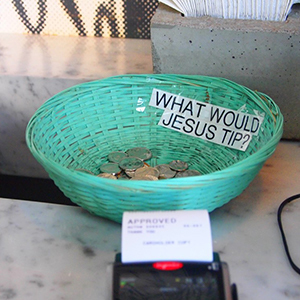 Religion is one of the differences between the countries. According to Mara Einstein, author of Brands of Faith, “Religion is more widely practiced in the United States than in any other industrialized nation in the world. The most widely publicized statistics are that 40 to 45 percent of Americans attend a religious service on a weekly basis while more than 90 percent claim to believe in a higher power.”
Religion is one of the differences between the countries. According to Mara Einstein, author of Brands of Faith, “Religion is more widely practiced in the United States than in any other industrialized nation in the world. The most widely publicized statistics are that 40 to 45 percent of Americans attend a religious service on a weekly basis while more than 90 percent claim to believe in a higher power.”
The stats are very different in Canada. According to Statistics Canada, 21% of Canadians attend a religious service on a weekly basis, and 65% believe in a higher power.
For this reason, and this reason alone, I believe Sweet Jesus is making a mistake not changing its name for the American market.
On the Sweet Jesus website the company writes, “Our name was created from the popular phrase that people use as an expression of enjoyment, surprise or disbelief. Our aim is not to offer commentary on anyone’s religion or belief systems. Our own organization is made up of amazing people that represent a wide range of cultural and religious beliefs.”
That statement may work in Canada, but it’s not going to assuage American consumers. The name is toxic.
Launching in a Foreign Market Is Harder than You Think
Even without a boycott, Sweet Jesus faces a difficult road ahead. Launching a brand in a foreign market has an incredibly high failure rate:
Target failed spectacularly in its attempt to conquer Canada. The company launched and shuttered 133 stores within two years.
Harry Rosen spent a decade trying to grow its presence in the United States, to abandon the venture and focus on its core Canadian business.
Tim Hortons Inc. has struggled to expand in the U.S. since opening its first store in Tonawanda, New York in 1984.
 Developing foreign markets may make sense on paper, but business models and operations don’t transition seamlessly. Differences in supply chains, cultures, competition, and buyer expectations have a nasty habit of breaking brands.
Developing foreign markets may make sense on paper, but business models and operations don’t transition seamlessly. Differences in supply chains, cultures, competition, and buyer expectations have a nasty habit of breaking brands.
With established brands like Jeni’s and Salt & Straw in the U.S., Sweet Jesus is entering a very competitive market. These companies deliver incredible products, have loyal customers, and there’s nothing offensive or polarizing about the brands.
Sweet Jesus needs to win the hearts and minds of new customers. It has an advantage in its Instagram-worthy desserts, but customers don’t come back twice if they find your brand offensive.
Capture the Momentum, Change the Name
Sweet Jesus is more than a name, it’s a branding system. The company may argue, “Our aim is not to offer commentary on anyone’s religion or belief systems,” but religion is baked into the brand identity:
The tip jar states, “What Would Jesus Tip?”
The sign on the sidewalk reads, “Bless Your Mouth.”
One of the desserts is called the “Sweet Baby Jesus.”
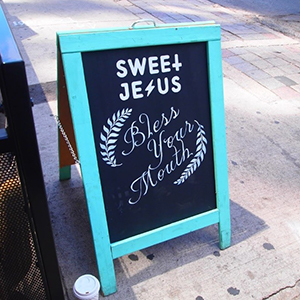 The brand is fundamentally flawed for the United States market, and deserves a name change. But it’s not all bad.
The brand is fundamentally flawed for the United States market, and deserves a name change. But it’s not all bad.
Sweet Jesus have proven themselves masters of publicity. The company can leverage the national media coverage and brand awareness to its advantage. It can work with local groups to co-create an evocative name that engages versus repels customers.
If Sweet Jesus can change the conversation and engage its markets, then P.T. Barnum’s quote fits. There’s no such thing as bad publicity, provided you win them over.
You're reading by Jeremy Miller, originally posted on Sticky Branding. Did you enjoy this article? If so, sign-up for more of Jeremy's articles at Sticky Branding.
March 20, 2018
How Nachos Got their Name

Crunchy. Salty. Cheesy. Nachos are one of the most shareable snacks ever created. But did you know, nachos are named after their inventor?
Ignacio “Nacho” Anaya created the iconic dish in 1943.
I’ve been researching the origin of . It’s surprising how some of the most common names we interact with daily have fascinating stories.
 Nachos, for instance, was a dish invented in a pinch.
Nachos, for instance, was a dish invented in a pinch.
During World War II, a group of U.S. military wives ventured over to Piedras Negras, a small Mexican town on the Texas border, to shop and socialize. When they decided to stop for dinner they discovered that all the nearby restaurants had closed.
Fortunately for the ladies, they met Ignacio Anaya, the maître d’ of the Victory Club. Ignacio was a master of hospitality and refused to turn the ladies away, but he was in a pickle. The Victory Club’s chef had left for the day.
Ignacio decided he would cook a dish for the group.
He looked around the kitchen and used what he could find. He cut up some tortillas into triangles, and plunged them into the deep fryer to crisp them up. He then topped the chips with cheese and sliced jalapeño peppers, and put his concoction in the oven for a few minutes.
Out of the oven came the signature dish we know so well, nachos.
Ignacio was a bit of a showman. He presented his unique snack to the ladies, and told them it was “Nachos Especiales.” Nacho was Ignacio’s nickname.
The ladies loved his dish, and they came home and raved about Nachos Especiales. The next week the ladies returned with their husbands, and soon the Victory Club developed a reputation for its delightful snack.
Over time, people shortened the name “Nachos Especiales” to simply “nachos.”
Another interesting twist to the nachos story, in the 1960’s Ignacio’s son attempted to trademark his father’s dish. Ignacio Anaya Jr. said, “I talked to a lawyer in San Antonio. He said there’s not much you can do after seventeen years. It’s in the public domain.”
Even though, Ignacio Anaya Jr. couldn’t trademark his father’s dish, his family must be proud. Ignacio created a delicious snack in a moment of desperation, and it became a staple of Mexican cuisine.
Nachos is one story of many. An interesting game to play with friends is “How did it get that name?” You will find lots of stories. Try it for caesar salad, leotards, or the Guinness World Record.
Let me know if you liked this story. Would you like me to share more origin stories of brands and names?
You're reading by Jeremy Miller, originally posted on Sticky Branding. Did you enjoy this article? If so, sign-up for more of Jeremy's articles at Sticky Branding.
March 13, 2018
25 Brand Names That Became Common Words

Great brand names can become common words like Google or Kleenex. These are category defining brands that people convert into verbs and nouns. For example, you don’t just search the internet, you google it.
What’s surprising is how many brand names have transitioned into everyday language. Below are 25 examples of brands that became common words. And if you’re keeping count, you’ll find 7 more names placed in the copy of this post.
Band-Aid
The Band-Aid was invented in 1920, and trademarked by Johnson & Johnson. The trademark is active today, but regardless of the product do you know an “adhesive bandage” by any other name?
Bubble Wrap
Bubble Wrap is a brilliant packing material, and an immensely fun noise maker. The product was invented in 1957, and is a trademark of Sealed Air Corporation.
Cellophane
Walk the grocery store aisles and you will see countless items wrapped in cellophane. Cellophane is a thin, transparent sheet made of regenerated cellulose. It is trademarked in Europe and several other countries by Innovia Films, but is a genericized product in the United States.
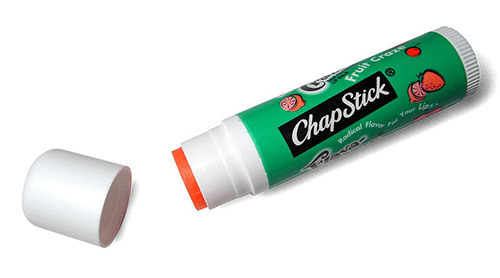 Chapstick
ChapstickLip balm may be the generic name, but Chapstick captures the essence of the product. Chapstick is one of Pfizer’s consumer brands. Due to the name’s popularity, the term has become a genericized trademark.
Crock-Pot
A Crock-Pot is a brand of slow cooker by Sunbeam Products. These handy devices cook your food all day at a low temperature so you have a tasty stew ready when you get home from work.
Dry Ice
Dry Ice is the solid form of carbon dioxide. (Thank you Wikipedia. I learned something new today.) The DryIce Corporation of America trademarked the solid form of CO2 as “Dry Ice.” The name stuck, and became the common name for the substance.
 Dumpster
DumpsterDumpster is one of the words that surprised me in the list. For some reason, I just assumed this is what you call a garbage bin. But it’s a brand of the Dempster Brothers. The name is a portmanteau — the blending of two words — of the word “dump” and the last name Dempster.
Escalator
Otis Elevator Co. trademarked the word “escalator” in 1899. The word was created by combining the Latin word for step, scala, with the word “elevator.”
Fiberglass
Fiberglass is the brand name for “glass wool.” It was trademarked by the Owens-Corning company.
Flip Phone
Some of the most common words began life as trademarked brands. Flip Phone was originally a trademark of Motorola.
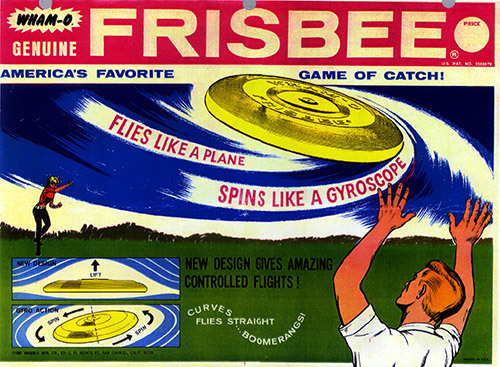 Frisbee
FrisbeeFrisbee is a trademark of Wham-O. What’s surprising is the number of brands that Wham-O created into generic names: Hacky Sack, Hula Hoop, Super Ball, Silly String, and Slip ‘n Slide. Wham-O are branding legends.
Laundromat
Laundromat was another surprising name for me on the list. This is trademark for a coin laundry shop. It was registered by Westinghouse in the 1940s, but they let the trademark expire.
Memory Stick
Sony branded portable flash memory as a Memory Stick in 1998. The first Memory Stick held up to 128 MB. It’s kind of quaint to think that was a lot of storage back then. My iPhone has 128 GB of storage, and I still keep running out of space.
 Ping Pong
Ping PongPing Pong is a brand of table tennis products owned by Parker Bros.. The name was coined in 1901. The founders thought the sound the small ball made when it’s hit across the table sounded like “ping pong.”
Popsicle
Popsicle, generically known as “ice pops” or “freezer pops,” is a registered trademark of Unilever. Frank Epperson popularized Popsicles after patenting the concept of “frozen ice on a stick” in 1923. Epperson claimed to have first created an ice pop in 1905 at the age of 11 when he accidentally left a glass of powdered soda and water with a mixing stick in it on his porch during a cold night.
Realtor
This is another “Who knew?” name for me. Real estate agents are often called “realtors,” but the term is a trademark of the National Association of Realtors. The terms “Realtor” and “Realtors” refers to members of the association, and not to real estate agents generally.
 Seeing Eye Dog
Seeing Eye DogThe Seeing Eye, Inc. is a guide dog school located in Morristown, New Jersey. Since 1929, the organization has trained guide dogs to assist visually impaired people. Interestingly, a “Seeing Eye Dog” is a trademark. If the dog is trained by anyone else it’s a “guide dog.” This is another example of a remarkably effective brand name.
Sheetrock
Sheetrock is the trademark held by United States Gypsum Corporation (USG) for their drywall product. Sheetrock is omnipresent in modern home construction, and has largely replaced plaster.
Styrofoam
Styrofoam may not be considered a “green product” anymore, but it’s still commonly used for foam cups, plates and coolers. Styrofoam is the branded product of polystyrene. The trademark is held by Dow Chemical.
Super Glue
“Super glue” is used informally as a verb or noun, but it is a trademarked product of Super Glue Corporation. It’s a brand of cyanoacrylate adhesive, and as we all know it’s super sticky.
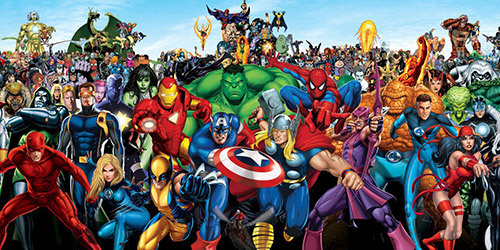 Super Heroes
Super HeroesThis is really neat. Super Heroes is a jointly owned trademark by DC Comics and Marvel Comics. I guess only DC and Marvel heroes can be super.
Trampoline
George Nissen and Larry Griswold invented the Trampoline in 1936. Nissen was a gymnastics and diving competitor and Griswold was a tumbler on the gymnastics team. The name came from the Spanish word “trampolín,” meaning a diving board. Nissen had heard the word on a demonstration tour in Mexico in the late 1930s, and decided to use an anglicized form as the trademark for the apparatus.
Videotape
Videotape was originally trademarked by Ampex Corporation. They were an early manufacturer of audio and video tape recorders, and quickly became a leader in audio tape technology. Ampex developed many of the analog recording formats for both music and movies that remained in use into the 1990s.
Windbreaker
Windbreaker is a trademarked word for jackets made by Celebration Trading Inc.. A windbreaker is a thin coat designed to resist wind chill and light rain, a lighter version of a jacket. The name is currently becoming a genericized trademark.
Zipper
The zipper may be the greatest piece of automation ever invented for clothing. The Zipper was originally a trademark of B.F. Goodrich for use in rubber boots. The word Zipper is onomatopoetic — a word that phonetically imitates the sound that it describes. Zipper was named for the sound the device makes when used, a high-pitched zip.
Your Turn
This is only a small sampling of brand words that have become commonplace. What other words do you use that originated as brand names?
Tweet your examples to @StickyBranding.
You're reading by Jeremy Miller, originally posted on Sticky Branding. Did you enjoy this article? If so, sign-up for more of Jeremy's articles at Sticky Branding.
March 6, 2018
Brand Names Are a Diminishing Resource
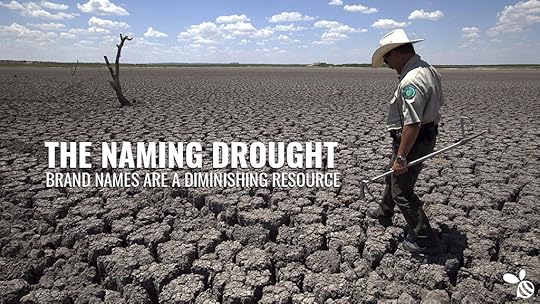
Brand naming has never been more challenging, because names are becoming a diminishing resource.
With the growth of apps, small businesses, and global competition the demand to find and secure relevant brand names is exploding, but so too is the difficulty in creating unique, defendable names.
The proliferation of names is astounding. For example, every four-character .com domain name has been registered, and it won’t be long until all the five-character .com’s have been registered too.
According to , there were over 332.4 million domain names registered across all top-level domains (TLDs) by the end of 2017. The .com / .net category accounted for 44% of all domains with 146.4 million registrations.
Put this in context. The Oxford English Dictionary has 171,476 words in current use, and 47,156 obsolete words. That means less than 0.15% of the .com and .net names are even English words. People and companies are scooping up names faster than we can invent words.
You’re going to have to open your wallet if you want to get a brand name with a relevant .com. For example, you can lease grant.com for the paltry sum of $10,000 USD / month.
Did you catch that? The owner of grant.com isn’t even selling the domain. They’re leasing it!
I recently looked at acquiring brandbuilder.com. The broker replied, “The ask for brandbuilder.com is $200K. Can I perhaps interest you in one of our other high quality ‘brand’ related domain names from our portfolio like amazingbrand.com, nationalbrands.com or premiumbranding.com?”
Yikes!
Domain names are only part of the problem. The same issue is happening with trademarks. The United States Patent and Trademark Office (USPTO) registered over 309,000 trademarks in 2016.
Companies are essentially trademarking language. Common words like twitter, square, and apple have been co-opted for commercial use.
On the other hand, many of the common words we use today originated as invented words or phrases by brands: Sheetrock, Bubble Wrap, Dumpster, Fiberglass, Memory Stick, Popsicle, Dry Ice, Escalator, Videotape, App.
Naming has never been more challenging, but it’s still one of the most important aspects of branding. Your of your company. It will outlive marketing, people, and products. It’s the one consistent thing that connects a company to its past.
Getting your brand name right is one of the most important business decisions you’ll make, but be prepared for the challenge. Naming is a process. It takes skill and effort to generate lots of ideas, and due diligence to vet and choose a name that your brand can defend and own.
But if you get it right, you may be able to add another word to the English language like Google or Band-Aid.
You're reading by Jeremy Miller, originally posted on Sticky Branding. Did you enjoy this article? If so, sign-up for more of Jeremy's articles at Sticky Branding.
February 20, 2018
The 3C’s of Creativity: Consume, Connect, Create

A friend of mine said, “I wish I had time to sit and think like you do.” I was puzzled and asked, “What do you mean?”
“You’re always generating so many ideas,” he replied. “I just don’t have the time to think and create like you do.”
I was a little dumbfounded by the comment. Did my friend, Rob, think I sat around all day contemplating the world of business? Immediately the image of me sitting in a deep leather chair, wearing a smoking jacket, deep in thought came to mind.
That image of creativity couldn’t be further from reality. Creating brilliant, actionable ideas isn’t something that happens in isolation. You create the best ideas when you are working to solve problems.
 It frustrates me when people talk about creativity as something outside of themselves. There’s no muse or higher-being passing genius through you. Creating brilliant ideas is a process. You work, push, and chip away at your ideas, and mold them into something you can use and share.
It frustrates me when people talk about creativity as something outside of themselves. There’s no muse or higher-being passing genius through you. Creating brilliant ideas is a process. You work, push, and chip away at your ideas, and mold them into something you can use and share.
Over the years I have honed my process of ideation into 3 habits:
Consume
Connect
Create
Consume: Feed Your Brain
Knowledge and experiences are the fuel that powers your creativity.
Consuming content and experiences is a primary source of ideas. Feed your brain with a diverse diet from a variety of sources. Don’t typecast yourself to one topic or opinion. Consume deeply and broadly, because it will give you the fuel you need to drive the creative process.
Connect: Apply Your Expertise
Talk, brainstorm and share your expertise freely with others. You will find the seeds of an idea when you apply your knowledge to solve problems.
An idea is sparked when you connect seemingly unrelated information to find solutions to a problem. These collisions are the starting point of ideation. But it also takes effort. You need to brainstorm, discuss, and work with others to help these seemingly unrelated pieces of information come together and form something new.
F. Scott Fitzgerald wrote, “The test of a first-rate intelligence is the ability to hold two opposing ideas in mind at the same time and still retain the ability to function.”
Create: Prototype Your Ideas
Creativity is the act of creating, and this is where you grow your ideas.
Think of the creating step as prototyping your ideas. This is where you test to see if your concepts work, and how they might be realized.
I use writing extensively in my creative process. I grow my ideas by writing articles, speeches, books, and working with my clients. By writing it down I am forced to convert an intangible concept that is stuck in my head into something that someone can use.
The Virtuous Circle
The 3C’s are a virtuous cycle. If I stop doing any step in the process my system shuts down, and I suffer from creative constipation.
How you apply the 3C’s will be unique to you and your style, but the steps are roughly the same for everyone:
Consume new knowledge and experiences regularly.
Connect your expertise to solve problems.
Create and prototype your ideas and prove they work.
Repeat.
You're reading The 3C’s of Creativity: Consume, Connect, Create by Jeremy Miller, originally posted on Sticky Branding. Did you enjoy this article? If so, sign-up for more of Jeremy's articles at Sticky Branding.
February 13, 2018
The Story Behind E3 Restaurant Group’s Name

Seattle has a fantastic food scene. Amazon is booming and bringing in a huge influx of people, and the city has been called the next stop for Silicon Valley. The region’s growth has turned Seattle into a culinary hotspot, but its roots are far deeper and richer.
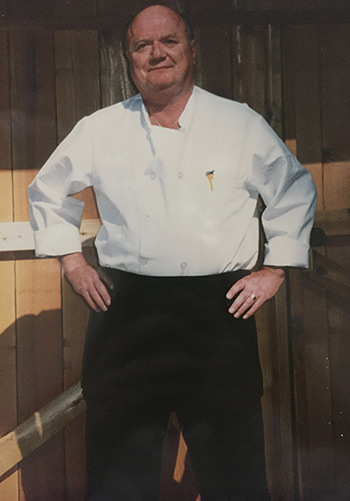 It was the pioneers that laid the foundation for success. For example, Earl Owens was the legendary corporate chef of the Metropolitan Grill in the eighties. If the Food Network existed back then, Earl would’ve been an Iron Chef.
It was the pioneers that laid the foundation for success. For example, Earl Owens was the legendary corporate chef of the Metropolitan Grill in the eighties. If the Food Network existed back then, Earl would’ve been an Iron Chef.
Earl Owens helped to define a standard of quality, service and innovation in the restaurant industry, and that legacy continues today. The Met is consistently rated in the top 20 best steakhouses in America.
Legacy and innovation are closely linked. Success is additive, and people build upon the ideas of the past to innovate in the present. This became the focal point in rebranding Consolidated Restaurants (CRI). CRI is the restaurant group that operates several landmark restaurants in the Pacific Northwest, including The Met.
In 2018 CRI changed its name to E3 Restaurant Group — a name that is a symbol of excellence for the company and its employees.
Brand Names Are Strategic
“Our company has a storied past,” said Jim Rowe, CEO of E3. “We wanted to capture our legacy and heritage in a new company name — one that built upon the successes and standards of quality that we’ve operated by for decades.”
The company was founded in 1951 by David Cohn. Mr. Cohn was a pioneer in the restaurant industry, and within a decade he created the largest single-owner-operated restaurant company in the Pacific Northwest. In 1983 David’s son, Ron, became CEO and he was known as a brand builder. Ron was passionate about building iconic, landmark restaurant brands like The Met and Elliott’s Oyster House.
Capturing that history became a defining aspect of finding a new name for Consolidated Restaurants.
E3 Is a Symbol of Excellence
E3 is a phrase that packs a lot of meaning for the company and its employees.
 The name originated from a seasoning spice created by Earl Owens. Back in the eighties, Earl created the seasoning spice for The Met, and over the years he perfected it. E3 represents the third generation of the recipe.
The name originated from a seasoning spice created by Earl Owens. Back in the eighties, Earl created the seasoning spice for The Met, and over the years he perfected it. E3 represents the third generation of the recipe.
The seasoning spice was so good that it was adopted and used in each of E3’s restaurants. It’s part of the company’s heritage and a symbol of excellence.
“The story comes naturally and resonates with our team,” explains Nicole Aly, E3’s Director of Marketing. “It’s a symbol that is easy to remember, and it represents a key part of our company.”
Nicole continues, “Our team likes how the name gives a nod to Earl and the seasoning, and they’ll say, ‘I get it. That makes sense to me.’”
The name works, because it’s packed with meaning:
It’s a symbol of family. Two of Earl’s grandsons hold key management roles in the company.
It’s a symbol of change. The spice evolved over time, and is in its third iteration.
It’s a symbol of excellence, and how E3’s employees work together to create unrivaled experiences for their guests.
Using a symbol is a powerful branding tool, because it can shape how the organization moves forward.
Branding From the Inside Out
E3 is an effective name, because it’s personal and meaningful for the team.
To create the name, Sticky Branding led the E3 management team through a unique brand naming process that was anchored on two core beliefs:
Nobody knows your business better than you.
Everyone is creative, provided they’re given structure.
The naming process was executed over 2 weeks. In the first week a “creative team” worked through daily brainstorming exercises to generate lots of brand naming ideas. In the second week, a rigorous analysis of the names was conducted through shortlisting, scoring, and customer testing to see which names resonated the most.
Nicole explains, “I personally loved it. We’ve gone through many naming processes, and it’s always been a painful grind. Having the daily exercises with a daily quota helped us stay focused, energized, and inspired to brainstorm new ideas. The tools, exercises and quotas helped us to think outside of the box.”
Jim adds, “I loved that the work was very specific. The steps were actionable, and it was always clear on what we needed to do next. I never got off a phone call with a feeling that we are stuck. I can’t say that about a prior naming process.”
A Source of Pride
E3 Restaurant Group is a house of brands. The customer facing brands are the restaurants: The Metropolitan Grill, Elliott’s Oyster House, Heartwood Provisions, Wing Dome, and Quincy’s Burgers.

E3 is a name for the team. It’s a symbol of excellence that captures the company’s beliefs and values, and how they work together to create iconic restaurants in a booming city.
You're reading by Jeremy Miller, originally posted on Sticky Branding. Did you enjoy this article? If so, sign-up for more of Jeremy's articles at Sticky Branding.
February 6, 2018
Is Your Marketing an Investment or an Expense?

Investors would be overjoyed to see a 20% return on their stock portfolio. Heck, 7.5% gains would be pretty respectable. When you’re making money it’s not an expense, it’s an investment.
We need to take a similar mindset to marketing.
Treating marketing as an expense is crazy. It’s like saying, “I only want to grow to this point.” But if you knew every dollar you invested in Google Adwords generated a $1.20 in revenue, you’d never want to constrain yourself with a marketing budget. You’d keep investing dollars, because you’re generating a solid 20% return. That’s smart marketing.
Always have an unlimited budget for marketing that works.
I see too many small- and mid-sized companies hamper their growth with “marketing budgets.” By setting a constrained marketing budget the team is implying one of two things:
Marketing is a waste of money, because it’s having little to no effect on sales.
Marketing feels like gambling, because you don’t measure the results and have no idea if its working.
If your marketing is a waste of money, stop what you’re doing. You wouldn’t tolerate an employee that never shows up for work, and you shouldn’t accept marketing that doesn’t work.
If on the other hand your marketing feels like gambling then use your budget to avoid any runaway expenses, but get smarter. Quantify the results of your marketing campaigns and processes, and get rigorous about data and accountability.
The best way to use your marketing budget is to test ideas and campaigns, and put in place the metrics to track results. Once you know a program is working, release the shackles and let it run freely. Good marketing is always an investment that pays dividends.
What I am arguing is relatively easy to grasp. This isn’t a complicated idea, but like so many other aspects of life it’s easier said than done. There is a great deal of rigor and practice required to convert marketing into an investment that delivers predictable returns.
To move marketing from an expense to an investment requires two key behaviors:
Master your data. I am obsessed with developing lead and lag measures that drive towards a defined goal. By mastering the measures that lead to results you can develop marketing programs that work.
Experiment Often. There is no shortage of brilliant ideas to market your business. The challenge is adapting and testing them to fit your business. That requires iterating and experimenting with ideas in small, contained projects. But when you find a marketing tactic that works, double down on it and make it an investment.
Like investing, marketing is hard. Only the most dedicated companies turn their marketing dollars into predictable returns. But that commitment is worth striving towards. Your business will grow in leaps and bounds when you marketing is treated like an investment versus an expense.
You're reading Is Your Marketing an Investment or an Expense? by Jeremy Miller, originally posted on Sticky Branding. Did you enjoy this article? If so, sign-up for more of Jeremy's articles at Sticky Branding.



